This year marks the end of the two-stroke era in grand prix roadracing, as the 125cc class transitioned to Moto3, using four-stroke, 250cc machines. Ironically, as Moto2 uses a production-based Honda engine and MotoGP is likewise threatened to be an all-CRT class using production engines in the future, Moto3 may be the only class using prototype engines going forward. Alternatively, the MotoGP rules may end up being similar to those for Moto3 — prototype engines but commercially available and with strict controls and a claiming rule.
The new rules for Moto3 require four-stroke engines with an 81mm bore (identical to the maximum allowable in MotoGP). One chain must be used in the valvetrain (no all-gear systems) and the ECU is a spec item supplied by Dell’Orto that limits maximum engine speed to 14,000 rpm. Pneumatic valve actuation is not allowed. The throttle body can only have one butterfly and it must be controlled by the rider — no ride-by-wire system. Only one alternate set of transmission ratios and one alternate primary gear ratio are allowed.
Strict controls on the engine and parts availability ensure fair competition. An engine manufacturer must be able to provide a minimum supply of engines and spare parts for 15 riders, and engines can be claimed for €12,000 euros (about $15,000). Spare parts must be provided and priced within market values, with no options that are only available to a select few — everyone has access to everything on the published list, and only those parts are allowed to be used. Aftermarket parts are allowed, but the engine manufacturer cannot be involved and the parts are subject to the same minimum availability restrictions as stock parts.
To date, four engines have been approved for use by the FIM — Honda, KTM, Oral Engineering and Emir — and nine manufacturers have developed chassis packages for those engines. Like Moto2, Dunlop supplies spec tires for the Moto3 class, and spec fuel and oil supplied by Eni must be used. Unlike Moto2 and MotoGP, the minimum weight of 148kg (326 pounds) includes bike and rider. Although stock or approved engine parts must be used, those parts can be modified or machined freely, allowing some freedom for creative engine builders. Chassis design and manufacture is open, and this is where the class has generated some interesting variety — and perhaps a glimpse into the future of MotoGP. SR
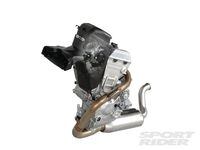
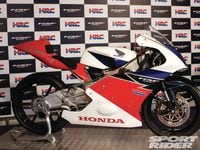
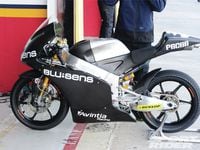
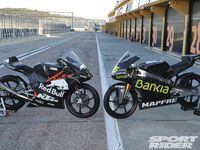

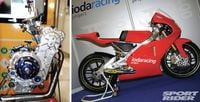
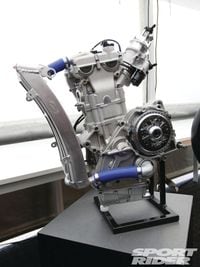
/cloudfront-us-east-1.images.arcpublishing.com/octane/YNGKWQRUMJEVLL5HTPPAEHIUQA.jpg)
/cloudfront-us-east-1.images.arcpublishing.com/octane/MB5GFVVTBVFY3PFOAQH5CLZTYM.jpg)
/cloudfront-us-east-1.images.arcpublishing.com/octane/R26K447HPJFXNL7HDNAIY4VOI4.jpg)
/cloudfront-us-east-1.images.arcpublishing.com/octane/U3S3JPJT5REW7NTPZMUP2FZY3A.jpg)
/cloudfront-us-east-1.images.arcpublishing.com/octane/WPQ2LXEKPVFZRF2CZLPSDOMVAI.jpg)
/cloudfront-us-east-1.images.arcpublishing.com/octane/BNSDRE4DCJE5ZPOLGPBZPOMZEI.jpg)
/cloudfront-us-east-1.images.arcpublishing.com/octane/GO6FSVIIKNBVPLSIS7IBWE7AEM.jpg)
/cloudfront-us-east-1.images.arcpublishing.com/octane/CS6TMZNTENGKFDW56HSE2HFZ2M.jpg)
/cloudfront-us-east-1.images.arcpublishing.com/octane/FUFID44YDBAM3EHF2AV5LDHLVE.jpg)
/cloudfront-us-east-1.images.arcpublishing.com/octane/QKEXZXUGVFATPE7RAT3HAHDQZ4.jpg)
/cloudfront-us-east-1.images.arcpublishing.com/octane/T7GEMBOUDBHX7EDP2PRQ2J2XME.jpg)
/cloudfront-us-east-1.images.arcpublishing.com/octane/U4CKRUKLKZD43FDSDLZHBL7YVA.jpg)
/cloudfront-us-east-1.images.arcpublishing.com/octane/OFSXJJ5PZFEZ5D5ZPMCFVHJUMA.jpg)
/cloudfront-us-east-1.images.arcpublishing.com/octane/N2JLNLG44VEKBMEPORRDTMX5A4.jpg)
/cloudfront-us-east-1.images.arcpublishing.com/octane/PYWEGG6FHJD6XLPKICS7XHMMZ4.jpg)
/cloudfront-us-east-1.images.arcpublishing.com/octane/XXFQQQ4AYJDCXDGVW3JTHAYONI.jpg)
/cloudfront-us-east-1.images.arcpublishing.com/octane/WMF36OICPZEJDPKABMHQVHXBZ4.jpg)
/cloudfront-us-east-1.images.arcpublishing.com/octane/3DJ46QYFAJA5RIJILQR2XIZXM4.jpg)
/cloudfront-us-east-1.images.arcpublishing.com/octane/4HYMMY6K4JHMNEQ56FXTGAHKG4.jpg)
/cloudfront-us-east-1.images.arcpublishing.com/octane/KUENZXA3RFBIHIDGHEEVH6YNYE.jpg)
/cloudfront-us-east-1.images.arcpublishing.com/octane/UW6THULV65E4TDI4DWLOMDR7LY.jpg)
/cloudfront-us-east-1.images.arcpublishing.com/octane/5S5CDZTZPJBHJBLHENVXEFYKG4.jpg)
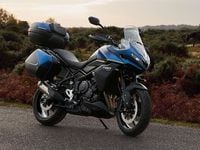
/cloudfront-us-east-1.images.arcpublishing.com/octane/RWF5RV5L55DMXMWZS2D3HZRJFA.jpg)